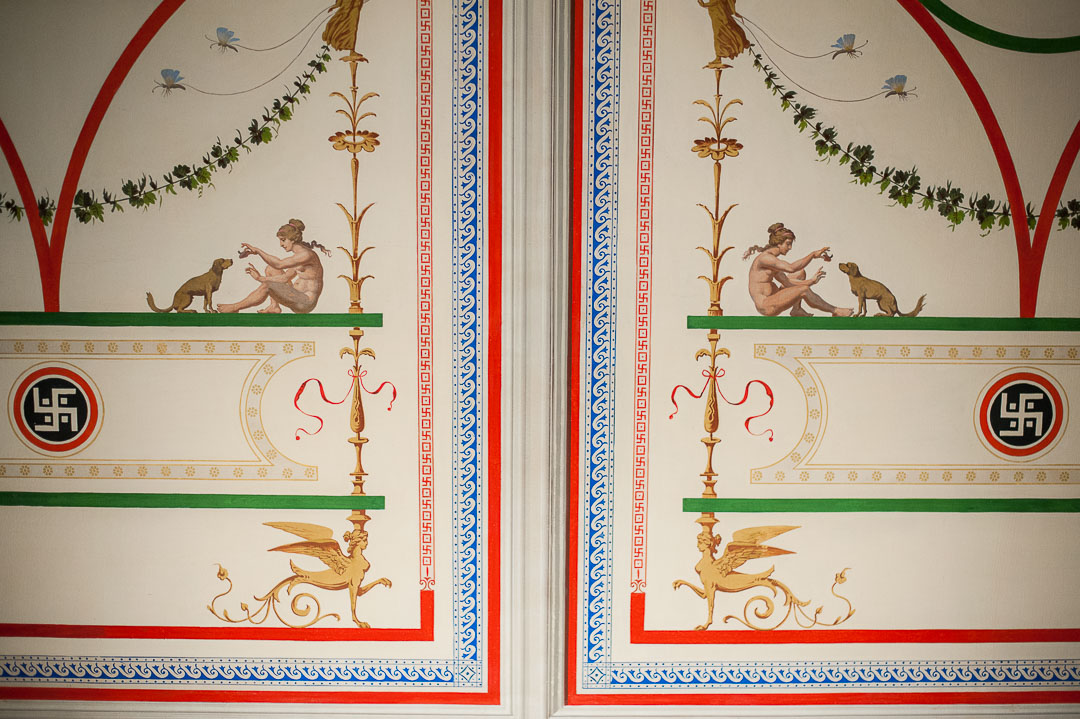
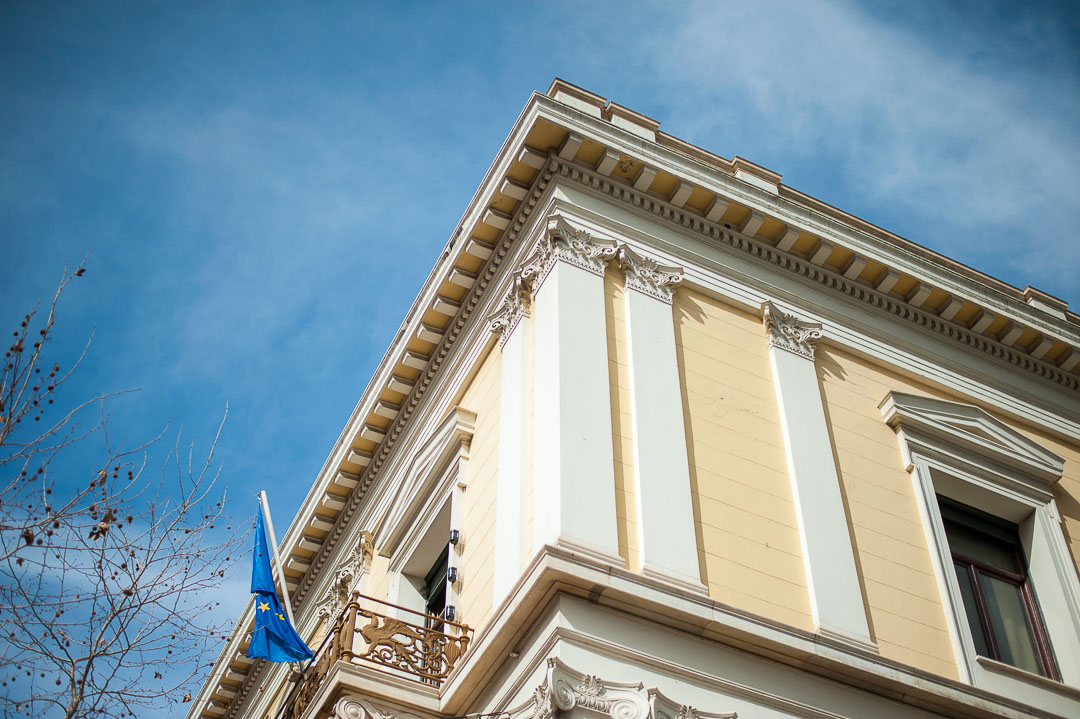
Option of the Museum from Panepistimiou Street
In Athen’s heart, near to Syntagma Square, there is the emblematic building of the Epigraphic Numismatic Museum, with its lovely garden welcoming you.

The garden
The builbing is also known as Iliou Melathron. The name means “Palace of Troy” and it is related to the discovery of the ancient city by Heinrich Schliemann. It was constructed between 1878-1879 by the German architect Ernst Ziller and has been used as the residence of Schliemann’s family.
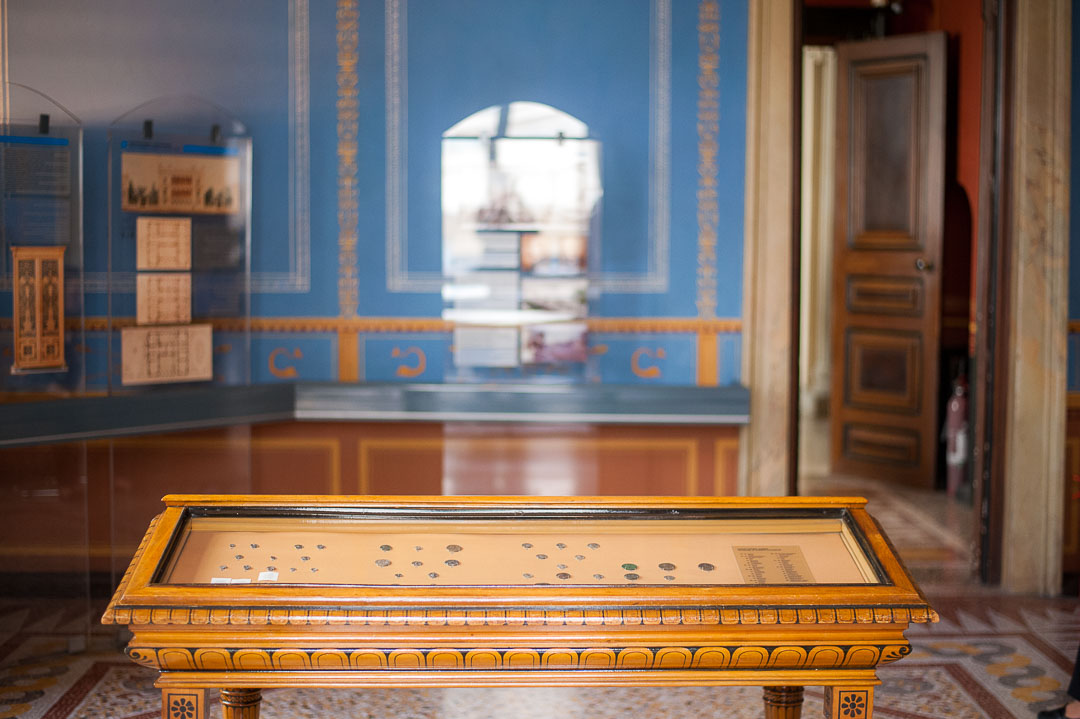
View of the interior
The German architect designed the building following the neoclassical trend of the late 19th century and adapting elements of the Italian Renaissance.
The interior is richly decorated with wall paintings copying Pompeian themes and the finds of Schliemann at Troy and Mycenae.
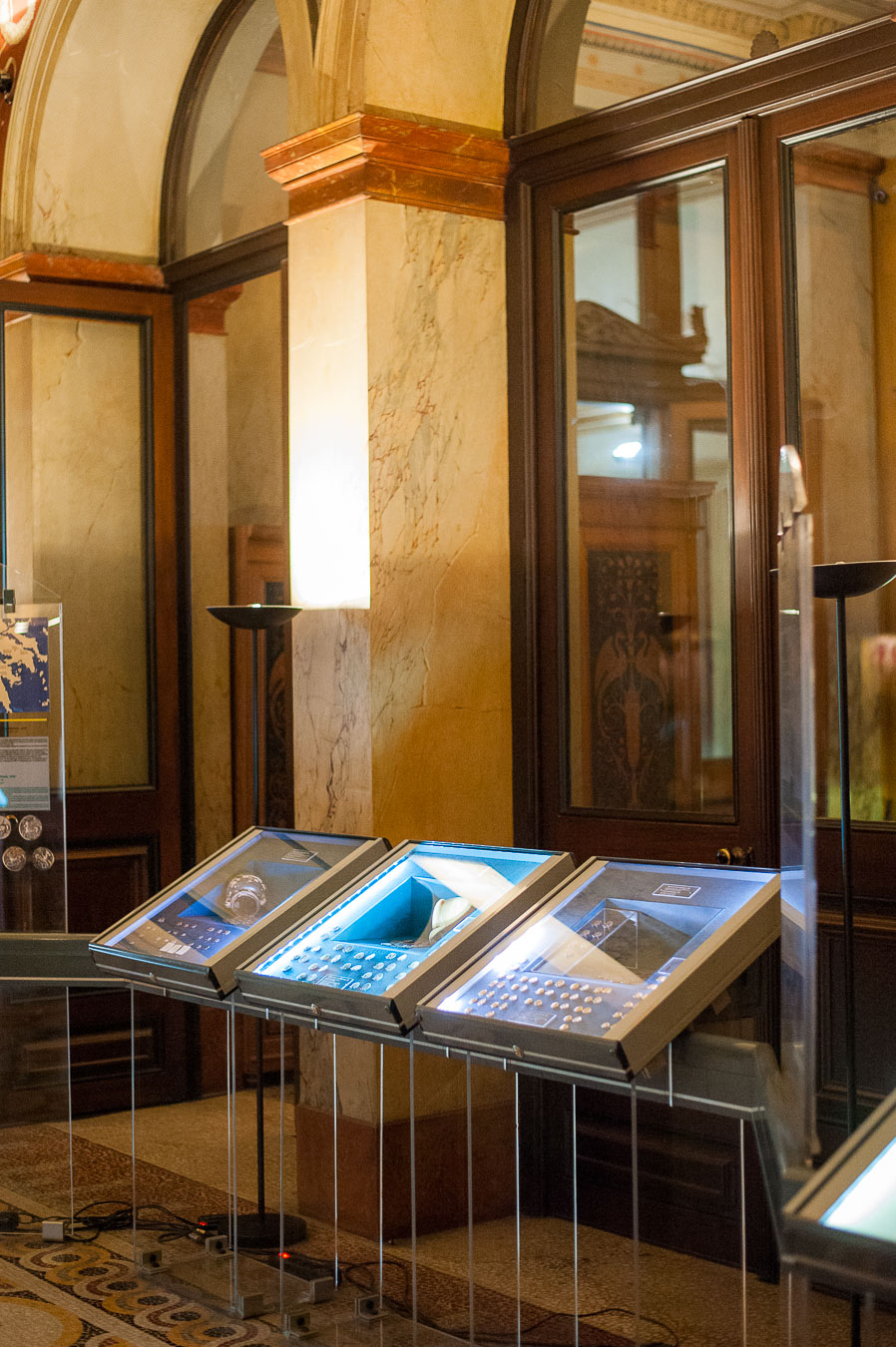
Showcases with coins
It is considered as one of the most important buildings that Ziller constructed.
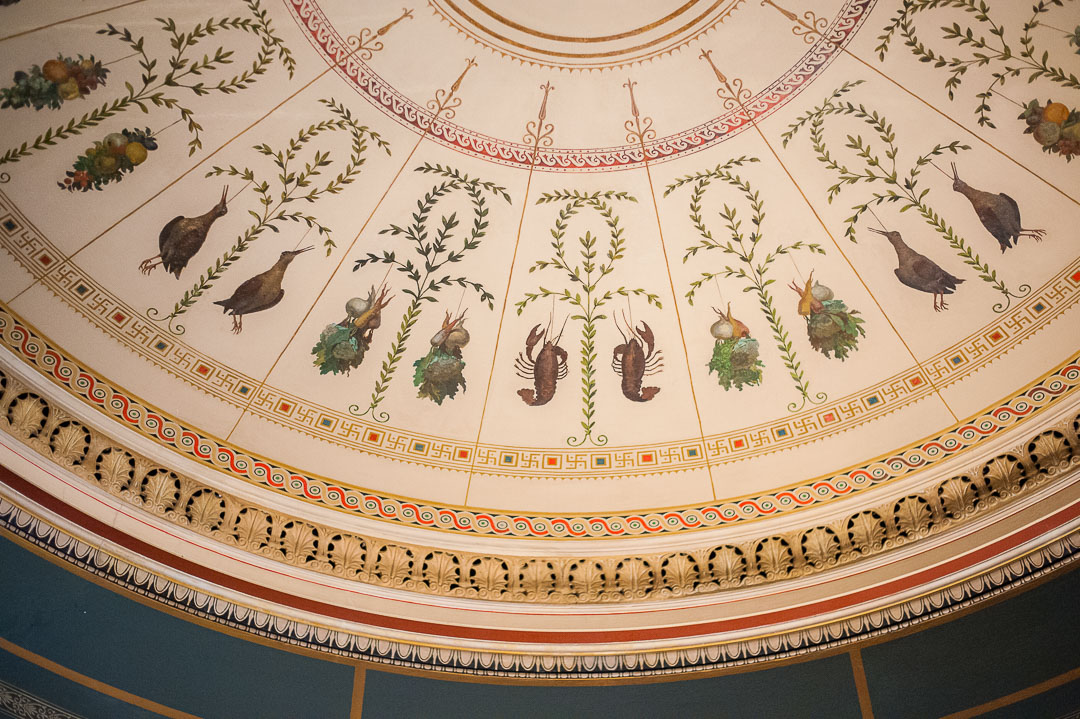
Technological innovations such as duct ventilation behind the perforated gypsum curtain that runs the roof of each room, gas-fired heating, and fire protection by using wood only on doors and windows, have been applied in the construction of the building.
But here I am not gone give information about the museum’s collections with coins. I am gonna showcase something that catches your eyes even from the museum’s entrance.
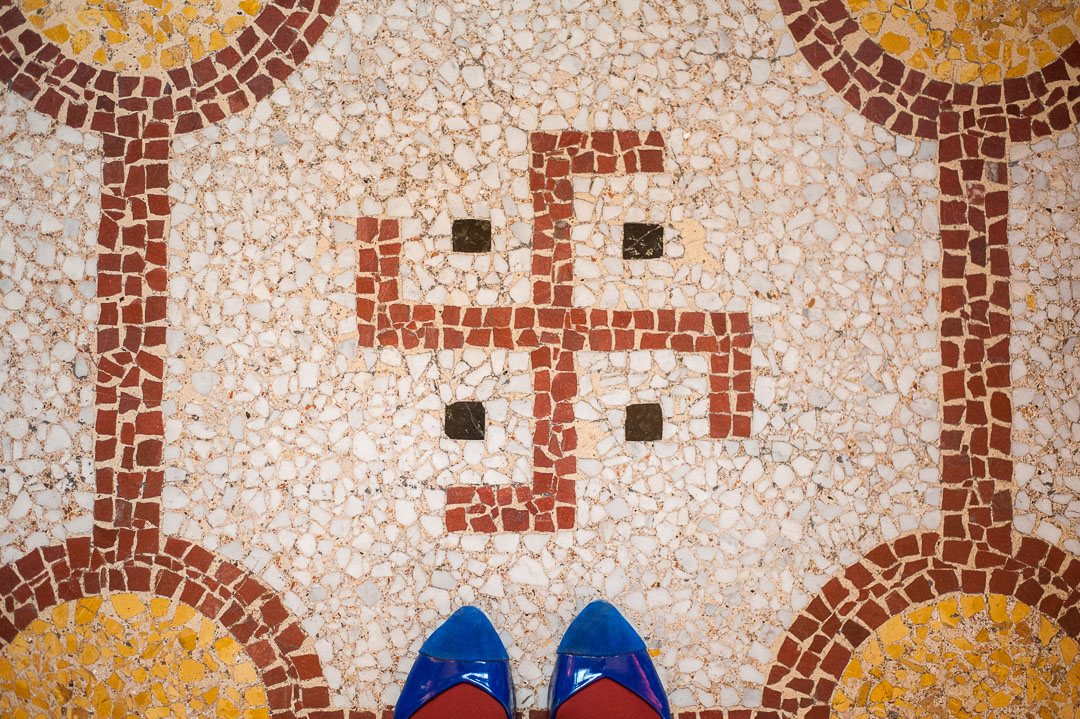
Walls, floors and ceilings covered with the guilty symbol!
The interesting and the intriguing is the symbol of the swastika that is almost everywhere in the floors, ceilings and walls as a decorative ornament.
Which is the reason of such a negatively charged symbol in public’s opinion, being in a museum?
A guilty symbol because of its usage from Nazi. A symbol synonym to hate, racism, antisemitism, violence, death, and murder.

A small treasure
The swastika is an ancient symbol that has been used for over 3.000 years.
Artifacts such as pottery and coins from ancient Troy show that swastika was a commonly used symbol as far back as 1000 BCE.

So many hidden information in so tiny surfaces
- China – Wan
- England – Fylfot
- Germany – Hakenkreuz
- Greece – Tetraskelion and Gammadion
- India – Swastika
Though it is not known for exactly how long, Native Americans also have long used the symbol of the swastika.
The word “swastika” (the right-handed convex cross 卐) and the “suavastika” (left-handed 卍)comes from the Sanskrit svastika – “su” meaning “good,” “asti” meaning “to be,” and “ka” as a suffix from the Egyptian word karest symbolizing soul, mummy, and spiritual transformation.
In Greek it means good («εὖ ἐστί»), good being («καλώς εἶναι») and it was called tetraskelion and gammadion.
Until the Nazis used this symbol, the swastika was used by many cultures throughout the past 3,000 years to represent life, sun, power, strength, and good luck.
Even in the early twentieth century, the swastika was still a symbol with positive connotations. For instance, the swastika was a common decoration that often adorned cigarette cases, postcards, coins, and buildings. That is the reason that Numismatic museum is adorned with so many gammadions.
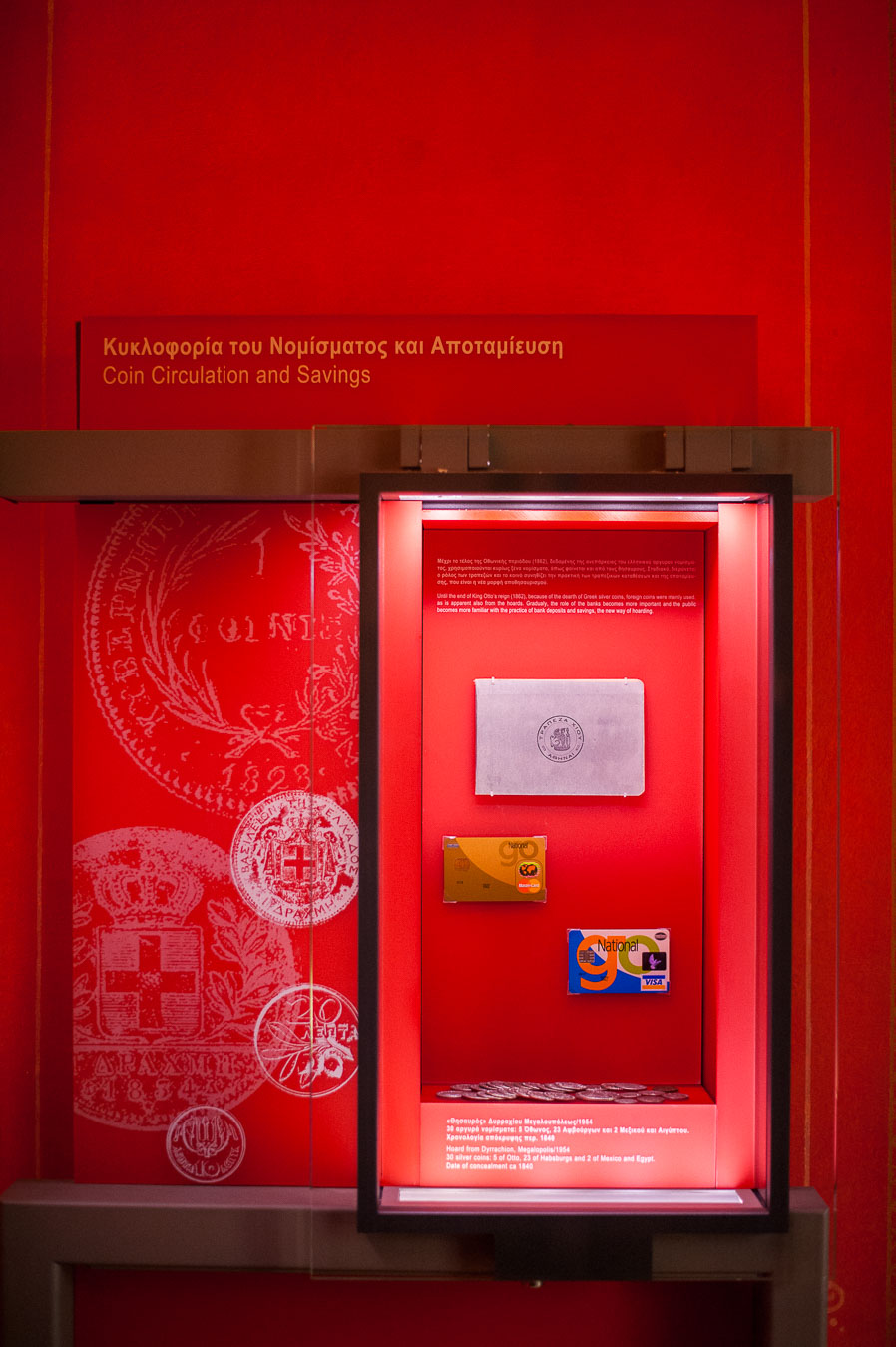
Money makes the world go around…
The imposing character of the buildings of many museums, as well as their interiors, create an imposing atmosphere that defines the overall experience of the visitors.
The space clarifies the audience’s experience. Very often overshadowing the exhibits themselves, which are perceived in this enormous context that reflects and highlights the values and aesthetics of specific social groups.
That is the reason that many museologists today shape the exhibition spaces housed in old, prestigious buildings, using various means (special coloring, illumination). They aim to weaken the strong character of the buildings and guide the visitor’s focus mainly on the objects (Nakou 2000).
The Epigraphic Numismatic Museum is one of those emblematic buildings that has their unique story as buildings and its history with its prominent owners.
But still… and apart from the great architectural, the diligent visitor can not overlook the objects within the collections coins and their history.
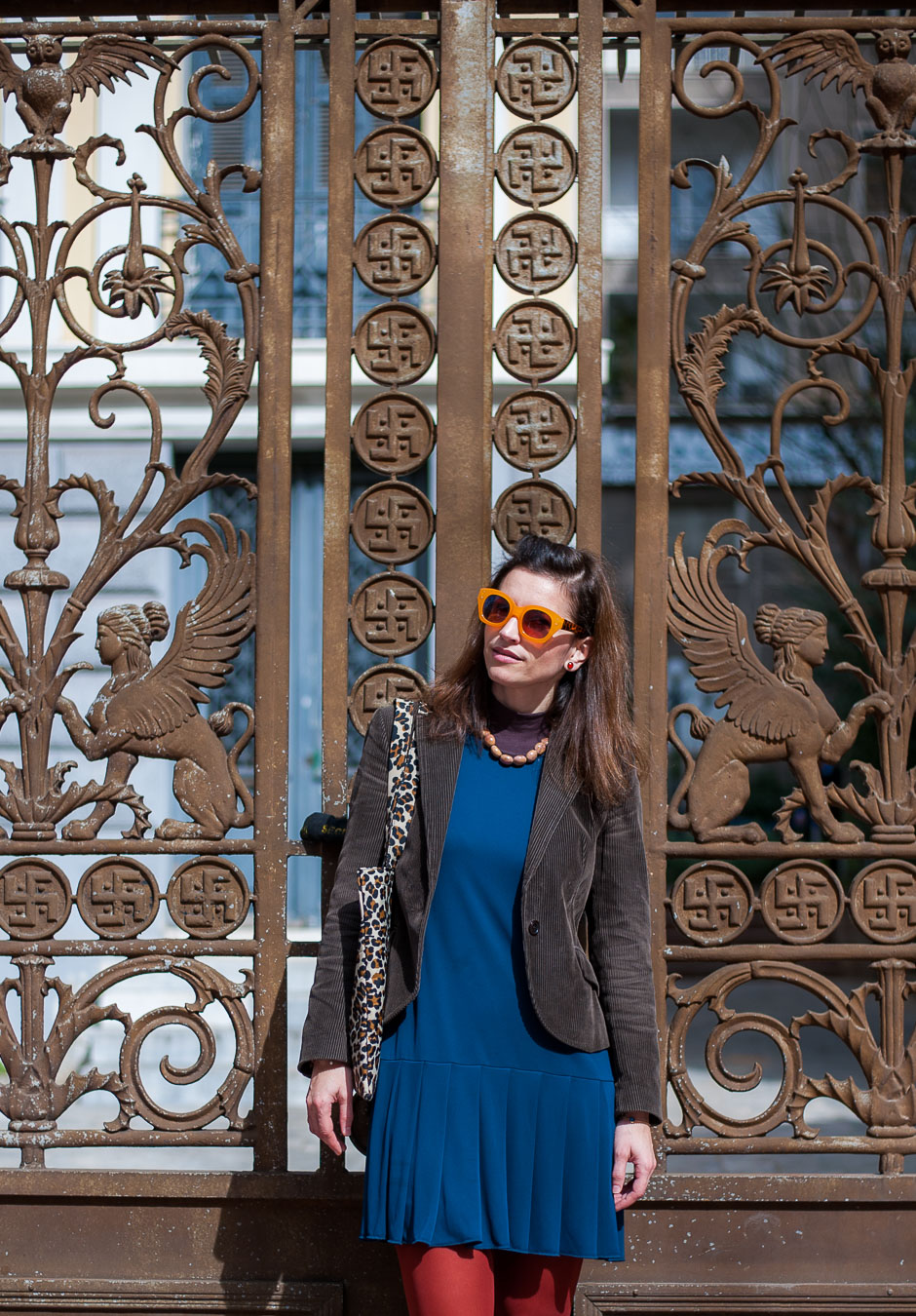
May the force of the symbol be always with us!
The symbol of flow and bliss at the street door of the museum.
May the force of the symbol be always with us!
Closing with some humor mixed up with Star Wars and magic. The fans know better…
Museum: Epigraphic and Numismatic Museum
Bibliography: Nakou E., (2001). Museums: We, the objects and the Culture. Nisos, Athens.
Νάκου Ε., (2001). Μουσεία: Εμείς, τα πράγματα και ο πολιτισμός. Νήσος, Αθήνα.
Wilson Th., (1894). The Swastika, the earliest known symbol, and its migrations; with observations on the migration of certain industries in prehistoric time. Report of the U.S. National Museum. PDF Download
Photo credits: Dimitris Tsiapas



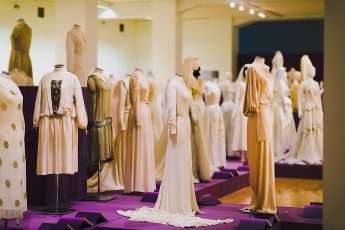
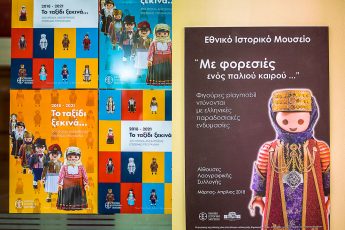


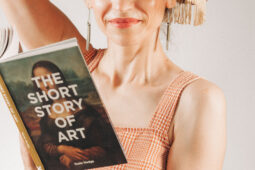


A tour in the monetary financial system and its impact in commerce and lifestyle throughout time would definitely sweep you off your feet!
I couldn’t agree more! It was indeed an enlightening visit!